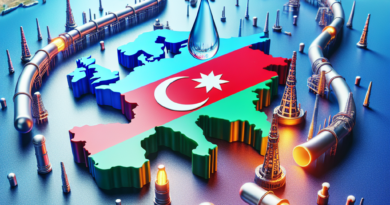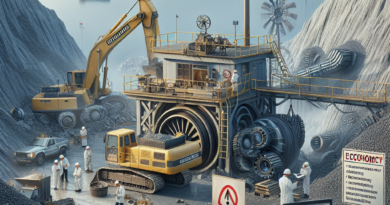Why the European CBAM directive will send the global LNG market into a tailspin
The global liquefied natural gas (LNG) market could face a significant change in prices and trade flows this decade if the European Union were to include LNG in its carbon border tax.
The EU Carbon Border Adjustment Mechanism (CBAM), commonly known as a carbon border tax, was launched on 1 October in the first transitional phase for imports of several groups of carbon-intensive products into the European Union .
In the first phase of EU carbon import pricing legislation, no tariffs will be imposed on products; this will happen from 2026.
However, importers of iron and steel, cement, aluminium, fertilisers, hydrogen and electricity in the EU will, from now, be asked to report the volume of their imports and greenhouse gas emissions ( GHG) incorporated during their production, although they will not pay any financial adjustment at this stage.
LNG is currently excluded from the carbon border tax, so imports are not taxed further.
However, the EU has extended its Emissions Trading Scheme (ETS) to the maritime sector, meaning that LNG cargoes in Europe will be subject to a carbon tax from 2024.
The EU could go further and include LNG in the CBAM, setting an import tariff at current carbon prices in the ETS.
If the bloc were to include LNG in its border tax mechanism, the LNG market would be split in two and become a two-tier market with premium prices in Europe and lower prices in emerging Asian markets, the energy consultancy claims in the his analysis.
The EU, which currently relies heavily on LNG imports for its natural gas supply – given that Russian gas via pipelines is mostly excluded – may still need relatively high volumes of LNG after 2026 and may decide not to adopt a tariff on LNG imports that would certainly upset global markets.
It remains to be seen how Europe will reconcile its emissions reduction targets with energy security.
This may not play to Europe's advantage because the lowest emitting LNG exporting countries would benefit the most, but market proximity will be key, including for one major exporter, Qatar, which is planning an expansion massive increase in its export capacity by the end of the decade.
Countries like Qatar and Mozambique will need high carbon prices in Europe that could push them far into emerging Asian markets, which are unlikely to introduce an import tax on emissions and which, unlike Europe, will only see increase demand for LNG in the coming years.
On the other hand, the United States has some of the highest-emitting LNG projects in the world, with the type of initial reserve and distance of the pipeline to LNG facilities adding to their high methane intensity.
US LNG projects will likely be motivated to take action to reduce emissions.
However, the scale and extent of future emissions taxes on LNG imports will be critical to reducing emissions in the large-scale LNG industry.
If Europe imposes new taxes, it would not achieve the required goal of large-scale decarbonisation of LNG projects globally.
The most likely outcome will be an increasingly divided LNG market.
read also Stocks, the alarm: we are close to the hysteria that led to the bursting of the dot-com bubble




